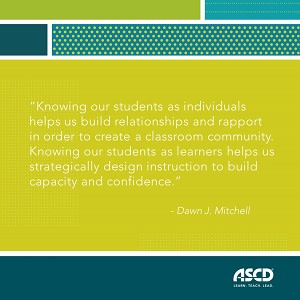Most educators are familiar with Think-Pair-Share, a popular technique used to ask questions in class and promote peer collaboration and communication. Yet, as with all classroom practices, it can be executed in a number of ways—some more successful than others.
We highly encourage weaving Think-Pair-Share into your regular classroom routine for all ages. But to do it well, keep the following in mind.
Don’t Skimp on the “Think”
One of the biggest challenges to implementing Think-Pair-Share is making sure to not skimp on think. When you pose a question to your class, the first impulse for students will be to turn and talk to a peer, skipping the thinking stage. Ensuring that ample think time is provided before the pair and share steps take place can prevent this impulse.
During thinking time, students can write down their initial responses and engage in necessary retrieval practice—recalling information from long-term memory without any notes or support to make the memory stronger and more accessible in the future. But retrieval practice requires each student to recall information individually. If students are asked to recall information in pairs or groups, some students will miss out on the chance to strengthen their memory of the material. It can also be difficult to gauge whether an individual student recalled the information correctly themselves or is relaying something said by a peer.
Think time prepares students so that when they do talk to their partner, they have something to share, potentially adding another factor: think, pair, compare, and share.
When Pairing, Listen
Make certain that during the pair and share stages, students listen attentively to their talk partners. Students can be tagged “A” and “B” (for example, by the alphabetical order of their names) so that when the teacher tells the “A” students to talk, “B” students listen and then switch. A particularly powerful way of making students accountable for listening to their peers is to make it clear that they are likely to be asked to report to the class what their partner said (“Emily, can you tell us what Sarah told you?”).
Teachers should actively support student listening, as it’s often an underrated element of Think-Pair-Share.
The response from the peer partner during the pair discussion might prompt students to add further points that they didn’t include in their original answer or add depth to existing points. Pair time also provides students with a safe space to discover if their answers and thoughts align with their partner's or to discuss any questions they may have. This can be a powerful method for activating students as learning resources for one another in the classroom. And it provides the chance for students to rehearse the vocabulary that they will use in reporting back to the class.
Listening requires effort, attention, and time. Teachers should actively support student listening, as it’s often an underrated element of Think-Pair-Share. In order to learn from each other, students have to listen to each other.
When Sharing, Pause
After the pair discussions have taken place, students share their thinking with the rest of the class. To further boost student confidence before whole-class discussion, award praise to students when walking around the classroom listening to conversations and individual responses, so students feel excited later to share with the whole class. Although overpraising students is ineffective, confirming to students that what they have said is worth sharing with the class is likely to make students more willing to share their ideas, and boost their confidence.
To start group discussion, the teacher can “cold call,” a term coined by Doug Lemov, for picking a student at random to answer a question. By this point, the students will have had the chance to recall information independently and rehearse their answer with their partner, making them more likely to be ready for wider discussion.
The teacher can then provide "response time"—at least several seconds—for students to listen and reflect on what others have said. This response time allows for further thinking, before students share their reactions, responses, and elaborations.
After an appropriate interval, a particularly useful technique is “Add. Build. Challenge.” or “ABC” for short. Is there anything else that could be added? Can you build on that answer? Does anyone want to challenge the answer, for example, by providing an alternative response?
A Different Way to Share
A particularly powerful way to do Think-Pair-Share is to use mini dry-erase boards. During the think stage, students write down what they can recall or jot down some initial thoughts. During the pair stage, students can add or remove thoughts from their board. Then, in the share stage, students hold up their boards to share what they wrote with the class. Dry-erase boards work best when student responses are short (about four words on each board), so they can be easily read.
The Bottom Line
Ultimately, Think-Pair-Share is like all other aspects of teaching, in that the key is careful planning. While a very useful technique, Think-Pair-Share takes more time than traditional classroom questioning, so to make sure that this time is well spent, it is important that the questions posed to students are well-designed and carefully considered. They must be communicated so that students fully understand what is being asked and that the question homes in on key points linked to the lesson.
By making sure that the teacher asks “questions worth thinking about,” Think-Pair-Share increases engagement, improves learning, and provides the teacher with actionable evidence about next steps—a uniquely powerful combination.








